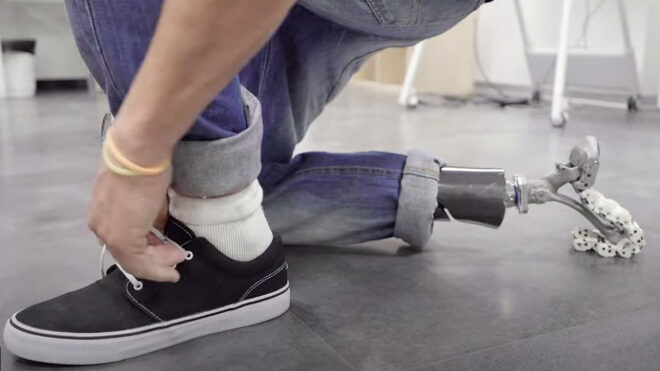Newly developed by Manuel G. Catalano prosthetic footwith its performance, it shows great potential putting.
The prosthetic foot called “SoftFoot Pro”, which came to life with the support of Manuel G. Catalano and his colleagues at the Italian Institute of Technology, It mimics the bones and tissues in the human foot. Above in the video The prototype version shown weighs 450 grams, but despite its low weight, it can function under a load of 100 kg. The remarkable prosthesis can move because it has multiple sections and can thus take the shape of the ground. Manuel G. Catalano, who created this structure by looking at the natural bone structure of the human foot, uses thin steel cables in the interconnection between the sections. The prosthesis, which has a titanium heel and support section, even allows the wearer to tie their shoelaces by bending over to the ground, as in real life. The prosthetic foot, which is currently undergoing clinical tests, is being tested on the Anymal quadruped robot at ETH Zurich and the HRP-4 humanoid robot at the University of Tokyo, as well as on humans. Such a flexible foot system seems very important for humanoid robots.
YOU MAY BE INTERESTED IN
Before this, a “third thumb” had attracted attention. The third thumb, created by British designer Danielle Clode for her master’s project at the Royal College of Art in London, It has been on the agenda since 2017. The finger, which has a structure that is not too complex and some parts produced with a 3D printer are used, made a splash in recent months with the results of a study shared by Cambridge University. The university’s Plasticity Laboratory tested Dani Clode’s robotic third thumb device at the Royal Society Summer Exhibition and found that using the finger was surprisingly easy.
As part of the special event, many people, young and old, tried the finger, It is controlled by a pressure-sensing sensor placed on the foot. The finger that those who try it quickly get used to controlling or using, It allows many operations that are normally not possible to be performed with one hand. It is hoped that the device, when further developed in the future, will be used not only to increase the abilities of healthy users, but also to assist people with reduced manual dexterity. When it is made available for commercial sale, it can also be made to be worn on both hands.
